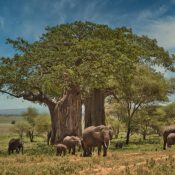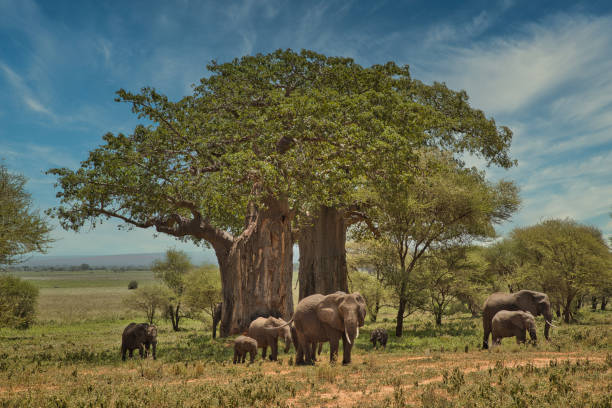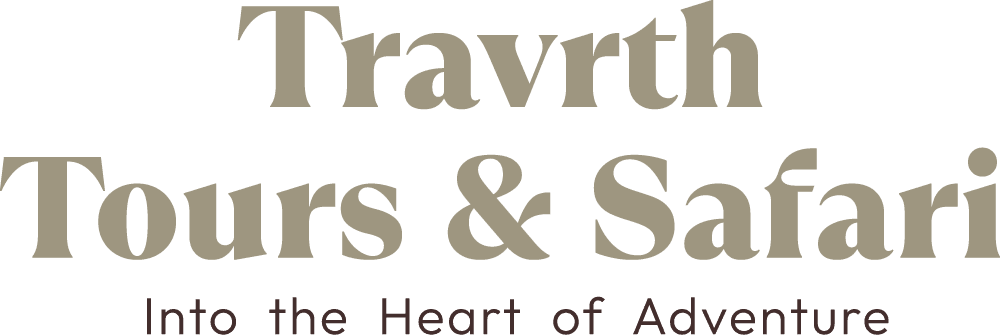Kruger vs. Serengeti: Which Iconic African Safari Destination Reigns Supreme?
Kruger vs. Serengeti: Which Iconic African Safari Destination Reigns Supreme?
Safari enthusiasts often debate this significant question. Is Kruger National Park in South Africa the top pick? Or does Serengeti National Park in Tanzania take the crown? Both spots draw crowds for their wild animals and stunning views. The real winner depends on what you want from your trip. Think about your budget, how you like to explore, and the kind of sights that excite you most. Self-drive adventures suit Kruger well. Luxury guided tours fit Serengeti best. Let’s break it down step by step.
Ecosystems and Wildlife Density: What You Will See
Africa’s parks teem with life. Kruger and Serengeti stand out for their rich animal populations. Each offers unique views of nature’s wonders. You spot different creatures based on the park’s setup. Density matters too, as well as how close the animals gather. This section compares what draws visitors to each.
The Great Migration: Serengeti’s Unmatched Spectacle
Picture two million wildebeest and zebras thundering across the plains. That’s the Great Migration in Serengeti. It happens every year as herds chase rain and fresh grass. The event spans months, from June to October. River crossings add drama, with crocs waiting in the water. Thousands cross the Mara River, creating heart-pounding moments.
Timing counts for Serengeti Great Migration viewing. Plan for July and August to see the peak action. Wildebeest migration routes loop through the park, so check updates before you go. This spectacle sets Serengeti apart. No other place matches its scale. You feel the pulse of raw survival here.
Guides point out the best spots from the camps. The open land lets you see far. Herds stretch to the horizon. It’s a once-in-a-lifetime sight that sticks with you.
The Big Five in Kruger: Accessibility and Reliability
Kruger packs in the Big Five: lions, leopards, rhinos, elephants, and buffalo. These animals live right there year-round. You don’t chase them like in some parks. Spotting them feels reliable, especially on game drives. Private areas next to Kruger boost your chances even more.
Think of Sabi Sands, a top private reserve. It borders Kruger and offers Big Five guaranteed sightings. Rangers know the trails well. They track animals with skill. Rhinos roam freely, thanks to strong anti-poaching efforts. Elephants crash through bushes in big groups.
Kruger Big Five tours often promise views. Stats show high success rates—over 90% for lions on some drives. This makes it great for first-timers. You learn about each beast’s habits too. It’s not just seeing; it’s understanding their world.
Diversity of Species Beyond the Big Five
Serengeti shines with plains game like gazelles and cheetahs. Over 500 bird types flock here, from colorful bee-eaters to eagles. Unique finds include the black rhino, rare but protected. The park’s grasses host hyenas and wild dogs in packs.
Kruger mixes it up with varied lands. You find over 500 bird species too, like the lilac-breasted roller. Reptiles thrive in its rivers—think Nile crocs and pythons. Endemic plants add to the mix, like the baobab trees.
Both parks boast wide variety. Serengeti edges out on herd sizes. Kruger wins for smaller, hidden gems. Pick based on what sparks your interest. Birds? Go Kruger. Big herds? Serengeti calls.
Safari Style: Self-Drive vs. All-Inclusive Luxury
How you safari shapes the fun. Kruger lets you drive your own path. Serengeti leans on pros to lead the way. Costs and comfort vary a lot. Let’s see what fits your style.
Kruger’s Appeal: The Self-Drive Pioneer
Kruger invented easy self-drive safaris. Over 1,000 miles of roads wind through the park. Paved paths suit beginners; gravel ones add adventure. You stop when you want, picnic under trees. Rest camps offer spots to sleep right inside.
Self-catering saves money. Cook your meals at camps like Skukuza. Book Kruger rest camps months ahead—they fill fast. Gates close at dusk, so plan your day. It’s freedom at its best.
Many visitors rent cars in South Africa. Drive from Johannesburg in five hours. Spot impala at dawn from your wheel. This hands-on way builds excitement.
Serengeti’s Model: Tented Camps and Exclusive Access
Serengeti focuses on tented camps. Mobile ones follow the migration. Permanent spots sit near rivers or kopjes. Guides drive you in open vehicles. They share stories of the land’s history.
Exclusivity shines here. Fewer people means quiet views. Wake to lion roars outside your tent. Meals come gourmet, with views of the plains. It’s luxury wrapped in wilderness.
No self-drive in Serengeti—roads challenge most drivers. Pros handle it all. This setup suits those who want ease.
Cost Comparison: Budget Breakdown
Kruger self-drive trips run cheap. Entry fees hit about $25 per day for adults. Add fuel and camp spots—total under $200 daily for two. Private lodges bump it to $500, but basics stay low.
Serengeti packages cost more. Daily fees are around $60, plus camp rates from $300 up. Full tours with flights hit $1,000 per day. Migration season spikes prices 20-30%.
- Kruger budget: $1,500-3,000 for a week.
- Serengeti luxury: $5,000-10,000 for seven days.
Save with Kruger if cash is tight. Splurge on Serengeti for the full show.
Landscape and Geography: The Vibe of the Park
The land sets the mood. Serengeti’s flats feel endless. Kruger’s mix brings surprises around each bend. Both paint pictures of Africa, but in fresh ways.
Vast Open Plains of the Serengeti
Serengeti’s plains roll out forever. Acacia trees dot the grass like sentinels. You see the game from miles away—no thick bushes hide them. The sky dominates, with sunsets that glow red.
This setup aids viewing. Herds move freely across the flat ground. Kopjes—rocky outcrops—add spots for leopards to lounge. The vibe? Pure, open wildness.
Rain shapes it all. Wet seasons green the fields. Dry times turn them golden.
Diverse Biomes of Kruger National Park
Kruger shifts from bush to forest. Rivers like the Sabie cut through, drawing thirsty animals. Mountains rise in the west, near the escarpment. You climb viewpoints for panoramas.
Bushveld thickens in spots, hiding shy creatures. Open areas let you scan for giraffes. This variety keeps driving fresh—never the same stretch twice.
Compared to Serengeti, Kruger’s layers offer more textures. You feel the park’s depth.
Logistics and Accessibility: Planning Your Journey
Getting there matters. Both need flights, but paths differ. Internal moves add steps. Smart planning cuts stress.
Entry Points and Infrastructure
Fly to Johannesburg for Kruger. It’s a quick drive or short flight north. Roads link cities well. Inside, gas stations dot the routes.
Serengeti starts at Kilimanjaro Airport. Charter flights hop you to airstrips. No big roads—bush planes rule. Arusha serves as a hub too.
Kruger wins for ease from South Africa. Tanzania needs more hops.
Best Time to Visit: Seasonal Considerations
Kruger shines in dry months, May to September. Animals cluster at water holes. Dust clears views. Avoid summer rains if you hate mud.
Serengeti ties to migration. June to October tracks the herds north. Check Serengeti migration maps online—they update weekly. Dry calving in February draws predators.
- Kruger dry peak: June-August, cooler days.
- Serengeti migration: July-September for crossings.
Match your dates to goals. Wildlife peaks vary.
The Cultural and Conservation Context
Parks are tied to people and protection. Local communities gain from visitors. Efforts guard the animals. Both spots show care for the land.
Community Involvement and Private Reserves (Kruger Focus)
Private reserves around Kruger team with the park. Sabi Sands and Timbavati share fences. Tourism funds schools and jobs nearby. Villages benefit from steady cash.
Rangers from locals patrol the borders. This builds pride in the wild. You hear stories from guides born there.
Conservation thrives on these ties. Poaching drops with community buy-in.
Conservation Efforts in a High-Traffic Area (Serengeti Focus)
Serengeti faces crowds and edge pressures. Farms encroach, sparking animal clashes. Teams track herds with collars. Anti-poaching units work day and night.
Tourism aids funds for fences and patrols. Boundaries link to Maasai lands. Herders coexist with wildlife.
Challenges persist, but efforts hold strong. The ecosystem stays vast.
Conclusion: Making the Final Decision
Kruger suits self-starters on a budget. Drive your way, spot the Big Five close up. Its varied lands and easy access make it welcoming.
Serengeti calls if the Great Migration tops your list. That massive herd move is unmatched. Luxury camps add polish to the raw power.
Both deliver top African safari magic. Weigh your wants—freedom or spectacle? Book soon and chase the wild. Your adventure awaits in one of these gems.




